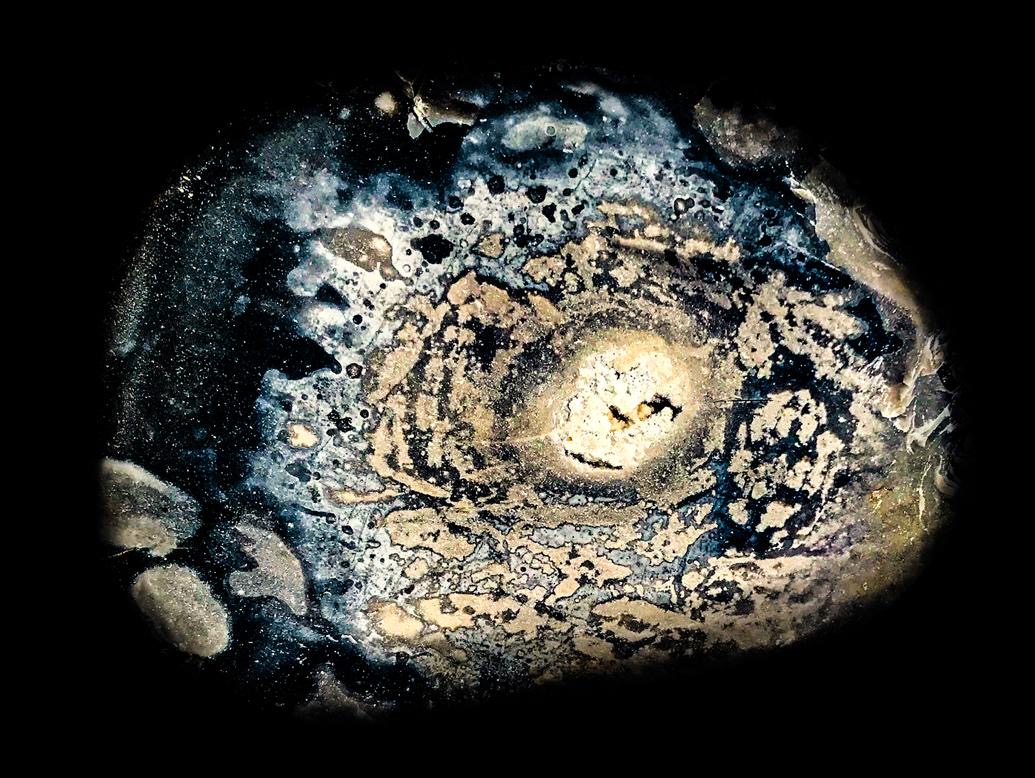John Lord is a master flint-knapper, one of the best and most experienced in the world. For our Extraction programme, he is exhibiting a series of remarkable photographs of flints. These are taken with a macro-lens so we can see in detail right into the structure. What we can see are the beautiful shapes and colours which are otherwise hardly visible to the naked eye. John’s favourites are the ones which appear to echo faces or figures or animal forms, which is how he has selected his titles.
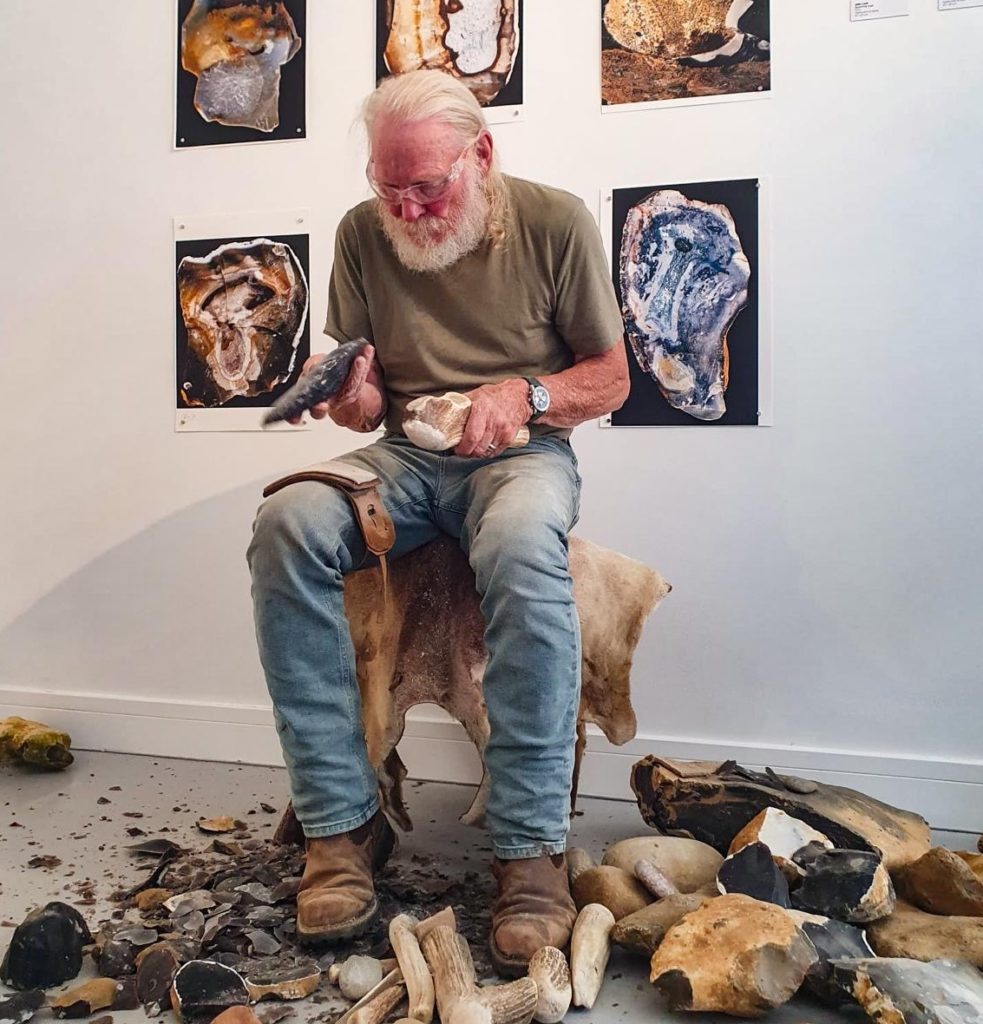
The display of John lord flint-knapping coincides with our Heavy Water Collective exhibit and both underpin our Extraction-focused residency programme which will be taking place at the same time.
What is Flint?
Flint is a crystalline form of the mineral quartz. It was originally produced from water-bound living organisms such as sea-sponges or microscopic plankton known as diatoms or radiolarians existing in the Cretaceous period, 60-95 million years ago. These organisms used silica from sea water to form their skeletons. As their organic parts decayed, the skeletal remains on the sea bed caused a chemical reaction with the oxygen from the water above. Ultimately this meant that silica was precipitated ( ie transformed from a dissolved substance into an insoluble solid). Over a very long time, silica filled cavities on the sea bed, forming concretions (ie hard compact masses) which enveloped the decomposed organic matter. The silica dehydrated and hardened to form flint nodules. These nodules were embedded within sedimentary rocks such as chalk and limestone.
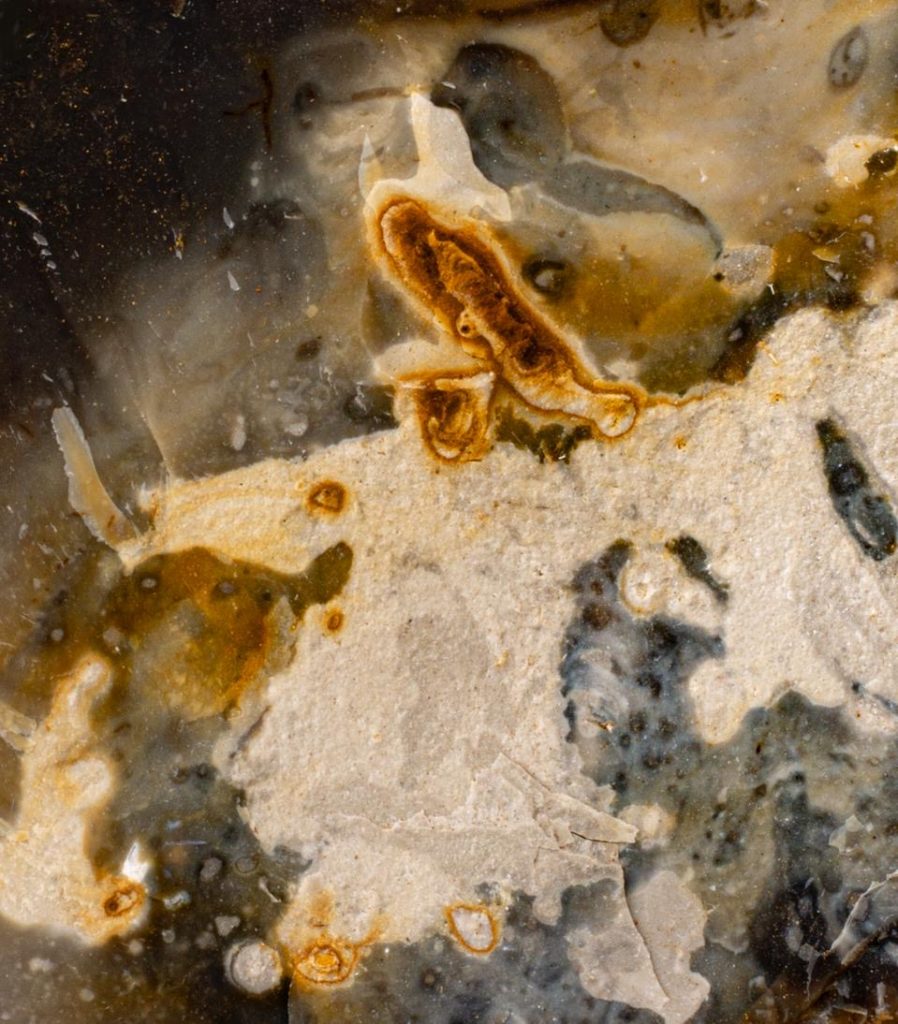
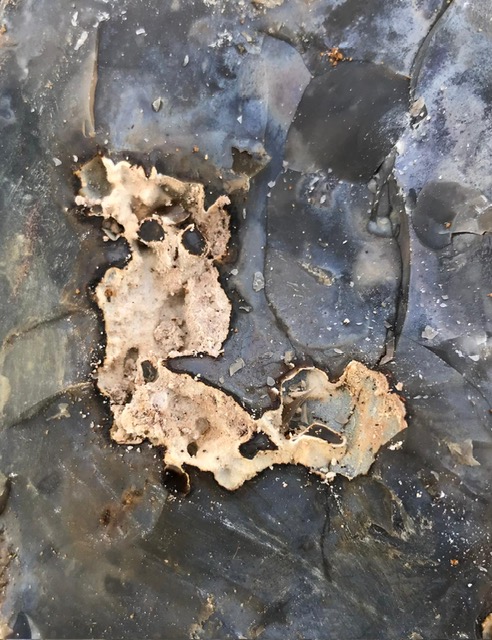
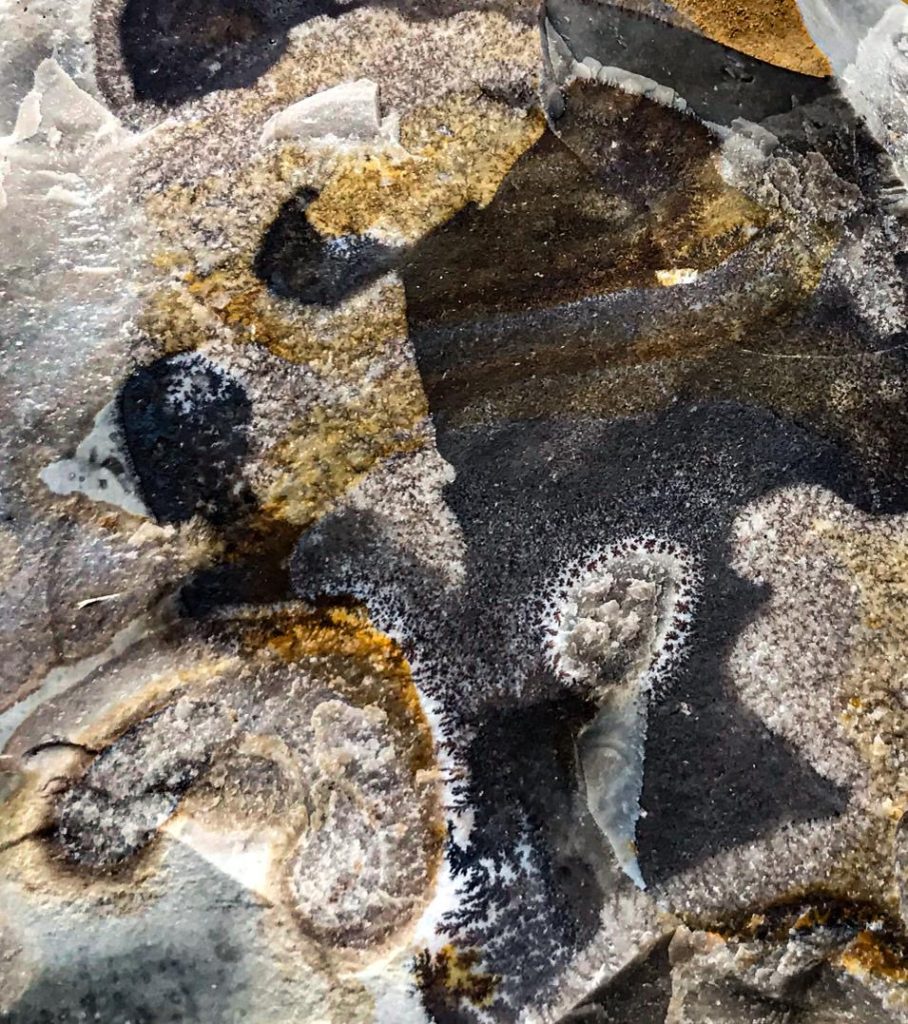
Chalk itself was formed by microscopic skeletons of plankton accumulated on the sea floor, forming a white mud. As the earth moved over tens of millions of years, flints could be locked within the chalk and also exposed and dislodged as separate nodules.
Flint has extraordinary durable qualities, making it suitable for building, But it is also friable and capable, with the right skill, of being chipped to make sharp implements and tools.
Flint-knapping workshop
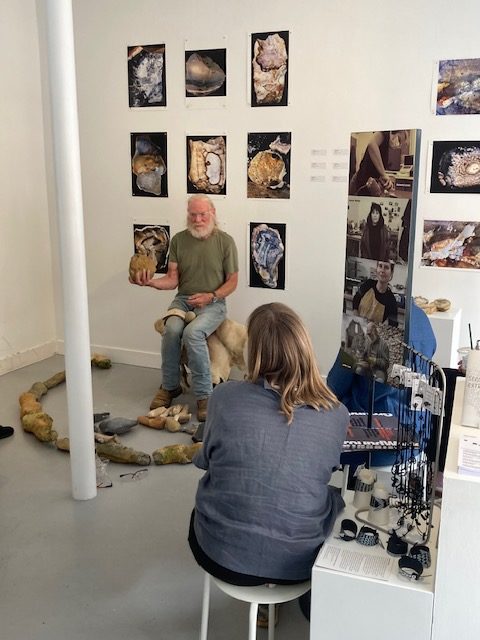
John conducted a live flint-knapping workshop on Saturday July 13, the opening day of his joint exhibition with Heavy Water Collective.
Flint-knapping and Pre-historic Technology
John Lord’s began prehistoric technology research projects in 1975. He and his late wife, Val, became joint custodians of Grimes Graves, the Neolithic flint mining site at Lynford, Norfolk.
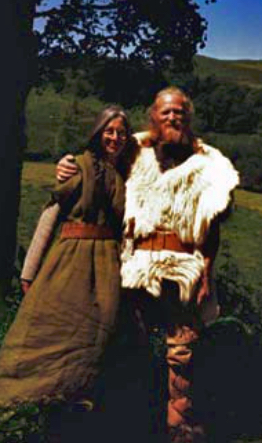
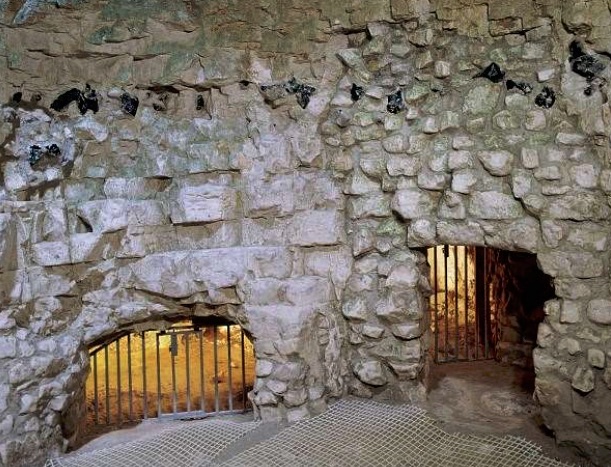
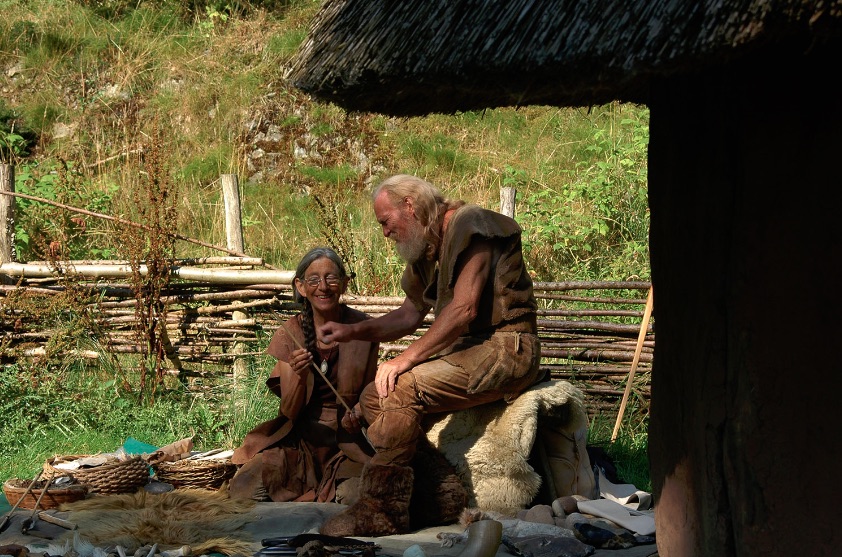
Val stayed on at Grimes Graves until 1992. Then, she began processing natural fibres and became a cordage and textile specialist. From then on Val and John pooled their technologies, and put their combined primitive technological skills on the road. Very sadly, Val died in 2015.
Life as a professional Flint-knapper
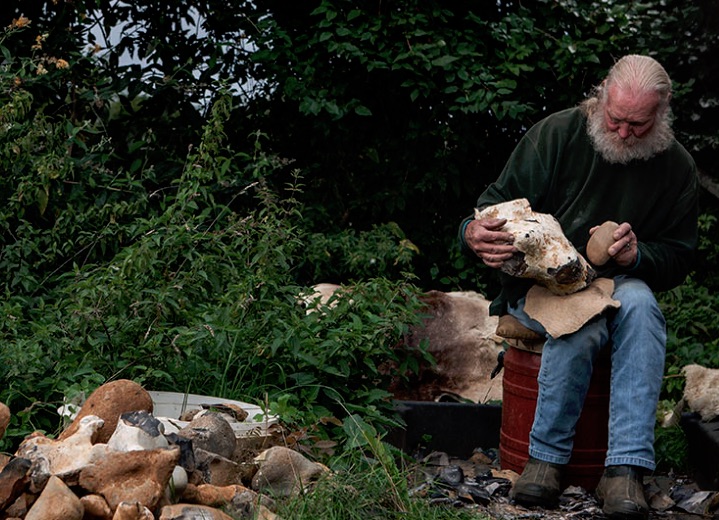
In 1987, John left Grimes Graves and English Heritage, in order to lead life as a professional flint knapper. He had been contacted by the construction industry, who were anxious to get their hands on knapped flints to use as a building material.
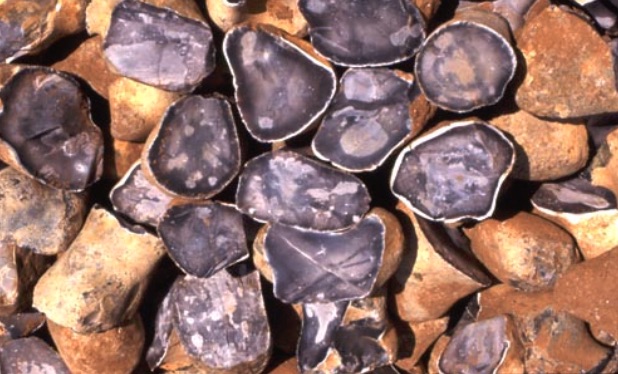
The production of flints for building purposes, meant that hundreds of tonnes of large flints needed to be knapped into fist sized pieces. John, assisted by his son William, provided 160 tonnes for one project alone, the wall that now surrounds the super-structure above the underground shopping mall at Norwich Castle. As he says:
Smashing such huge quantities of flint, though often painful, was nevertheless an extremely valuable and unique experience for the knappers involved.
John Lord



After Val’s death, John continued teaching and developing his practice solo.
A glance at the links on John’s website shows how he is part of a movement in the construction industry which takes particular care with geological materials. Flint is used with immense care and sensitivity by him and his collaborators. However, recently he has had to stop supplying the construction industry with flint, as more and more quarries have closed.
Award winning
On 17 June 2017 John Lord was awarded the British Empire Medal for his services to the trade of flint-knapping, both academic and architectural. In 2021, he received the Marsh Award for Anthropology in the World, from the Royal Anthropological Institute.

